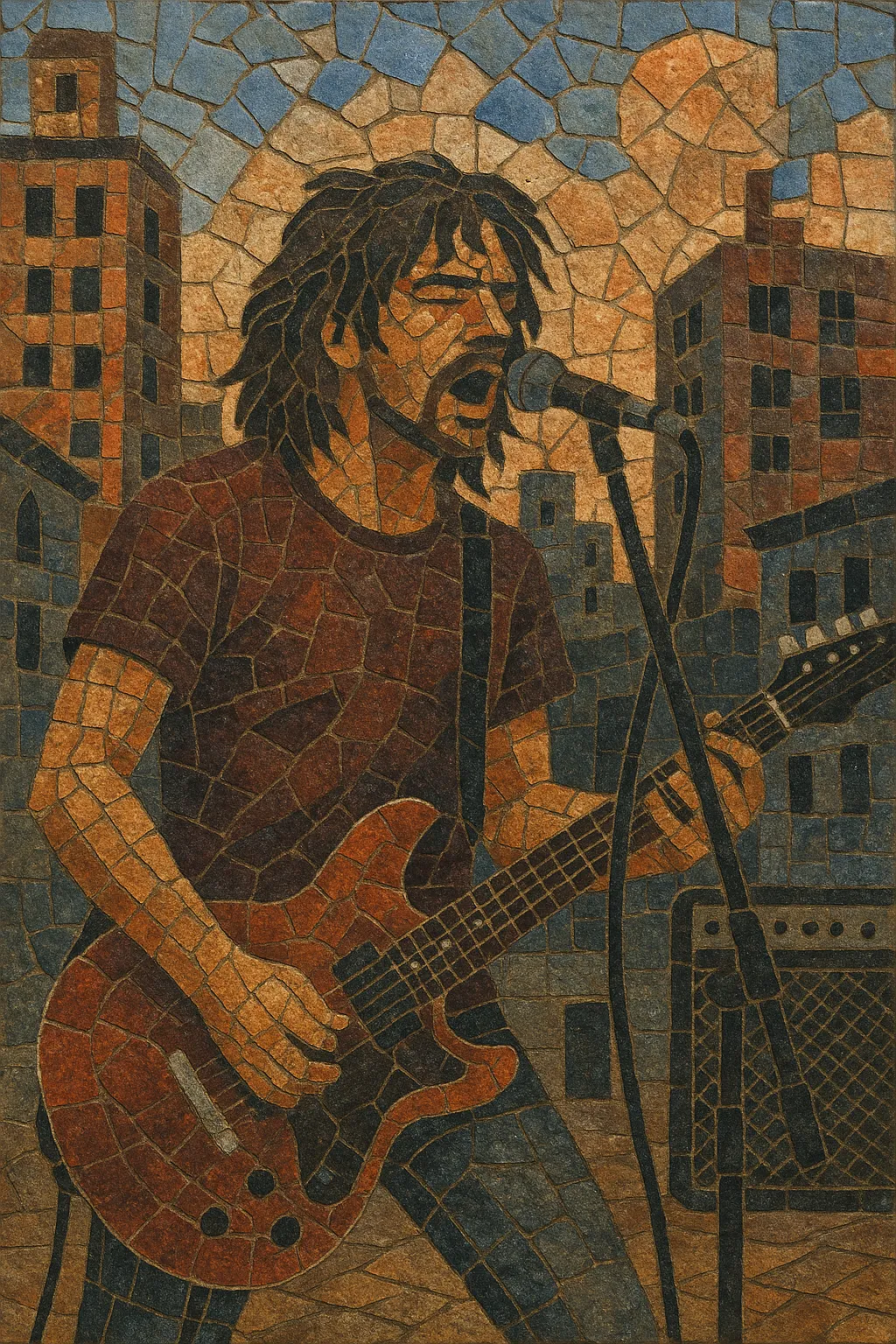Rock urbano is a Spanish working‑class strain of rock that blends hard rock riffs, bluesy guitar language, and a gritty, street‑level lyrical sensibility. It favors straightforward song forms, punchy rhythms, and raspy, lived‑in vocals over flash or studio gloss.
The genre emerged as an earthy counterpoint to trendier new wave and pop scenes, centering on everyday struggle, friendship, nightlife, and social critique. Its sound is guitar‑driven, anthem‑minded, and designed for bars, clubs, and festivals, with chantable choruses and emotive solos.
Rock urbano took shape in Spain in the late 1970s and early 1980s as a rough‑edged, working‑class rock language. While contemporaneous with the Movida madrileña, it positioned itself as an earthier, street‑wise alternative to new wave and synth‑pop, emphasizing guitars, direct lyrics, and blue‑collar realism.
Bands like Asfalto, Topo, Ñu, and especially Leño (with Rosendo Mercado) laid the template: heavy and blues‑rock riffs, narrative verses, and fist‑raising refrains. The music spread beyond Madrid into other industrial and university hubs, with Barricada (Pamplona/Navarra) and Los Suaves (Ourense) adding harder, sometimes darker colors. The scene’s identity crystalized around neighborhood venues, touring circuits, and a shared ethos of honesty and self‑reliance.
The 1990s brought renewed momentum and broader audiences. Extremoduro (Plasencia) injected poetic grit and expansive arrangements, while Platero y Tú (Bilbao) delivered hook‑rich hard rock steeped in blues. Marea and Porretas kept the bar‑band immediacy alive, helping to codify the style’s core: chunky riffs, emotive solos, and street‑level storytelling. Rock urbano became a staple of Spanish festivals and a touchstone for Spanish‑language rock across borders.
Into the 2000s and 2010s, veteran acts and new groups sustained the sound with updated production but the same attitude: raw guitars, sing‑along choruses, and narratives about work, love, and everyday pressures. The genre influenced parallel scenes abroad (notably Mexico’s rock urbano) and continues to signify authenticity and directness within Spanish rock culture.
Use two electric guitars (rhythm and lead), electric bass, and acoustic drums. Add occasional harmonica or Hammond/organ for color. Keep tones organic: cranked tube amps, moderate gain, and minimal effects beyond overdrive, wah, and occasional delay.
Build riffs from blues‑rock vocabulary (minor pentatonic, Aeolian/Dorian shades). Favor I–bVII–IV and I–IV–V movements, power‑chord voicings, and mid‑register riffs that lock with the kick and snare. Lead work should be lyrical and emotive rather than virtuoso for its own sake.
Stick to 4/4 with solid backbeats at medium to uptempo (roughly 90–150 BPM). Groove can be straight or lightly swung; keep drum parts punchy and unpretentious: driving eighths on hats, big snare, and supportive fills into choruses.
Deliver vocals with grit and projection. Write in plain, idiomatic Spanish, using neighborhood slang and vivid imagery. Topics include working‑class life, friendship, nightlife, social critique, and bittersweet relationships. Aim for memorable, chantable choruses.
Common structures are verse–pre–chorus–chorus with a middle‑eight and a guitar solo. Layer rhythm guitars hard‑panned for width; let the bass anchor the harmony and interact with the kick. Reserve dynamics for chorus lift and solo spots rather than constant density.
Track live when possible to capture room energy. Avoid over‑editing; keep drums natural and guitars forward. Slight tape saturation or console‑style bus compression suits the style; leave space for crowd‑ready vocals and hooks.
Over‑polishing, excessive tempo, or overcomplicated harmony can sap the genre’s street‑level impact. Keep it honest, riff‑centric, and chorus‑driven.


